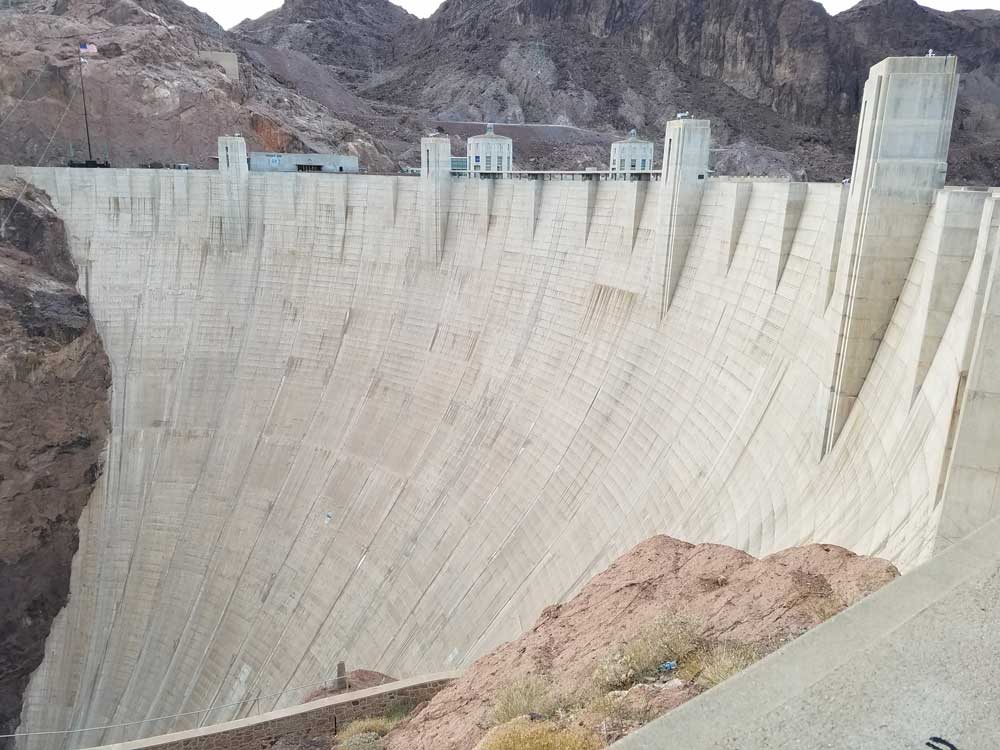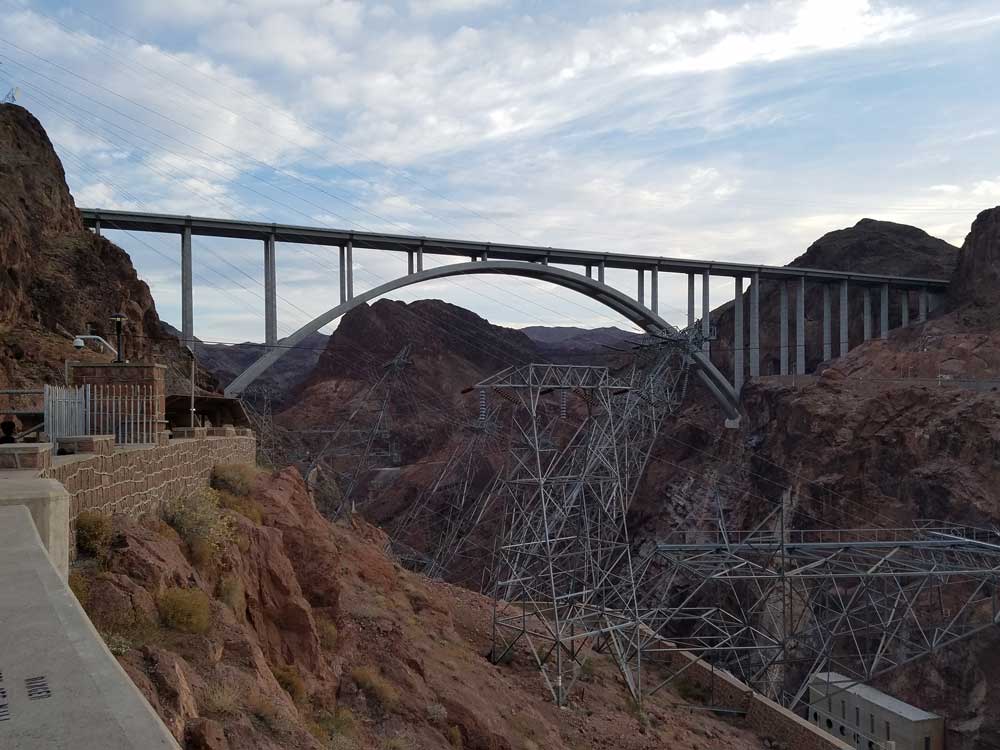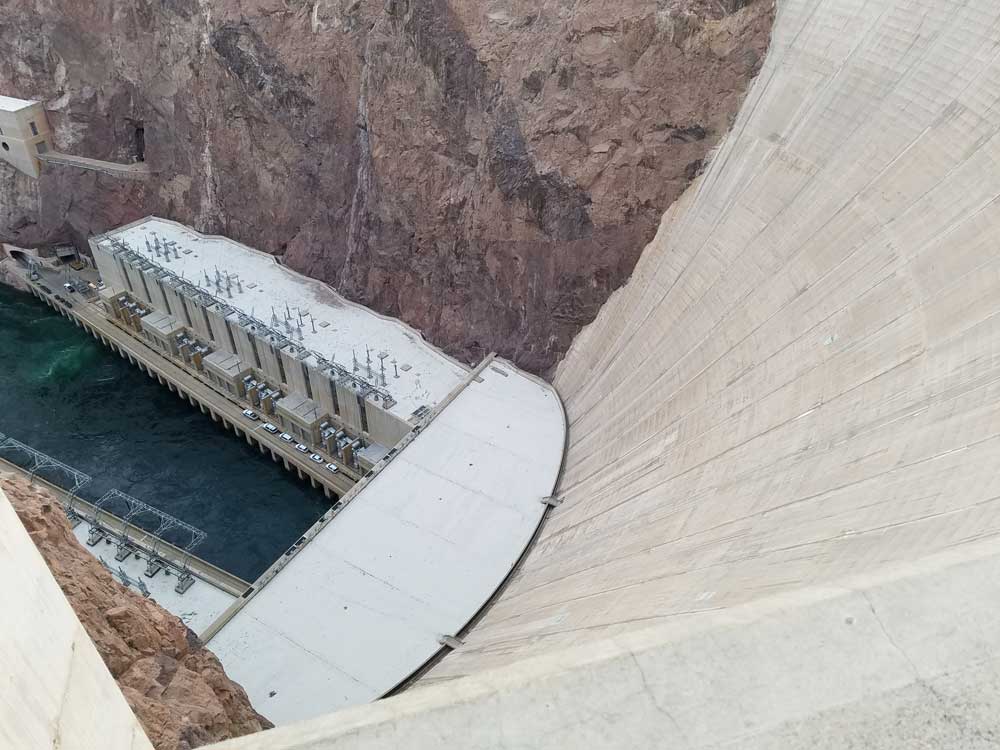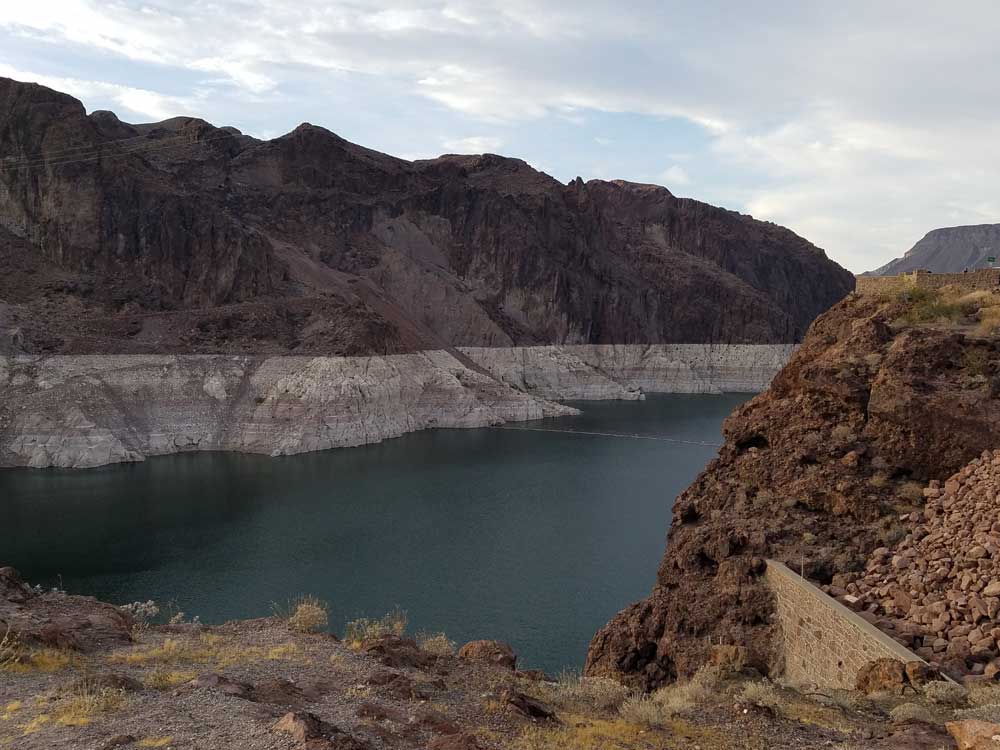Massive concrete arch-gravity dam spanning the Colorado River, offering tours, exhibits, and panoramic views of engineering and natural marvels.
General Information
Visitor Center: Daily 9am to 4:15pm
Closed Thanksgiving and Christmas
Power Plant Tour: Adults $15, Seniors/Military/Juniors $12
Parking: $10
How to Get There
From Las Vegas (35 mi): Take US-93 S through Boulder City, then follow signs to Hoover Dam via Nevada State Route 172.
Overview
Hoover Dam is a concrete arch-gravity dam in the Black Canyon of the Colorado River, on the border between the U.S. states of Nevada and Arizona. It was constructed between 1931 and 1936 during the Great Depression and was dedicated on September 30, 1935, by President Franklin D. Roosevelt. Its construction was the result of a massive effort involving thousands of workers, and cost over one hundred lives. Originally known as Boulder Dam from 1933, it was officially renamed Hoover Dam for President Herbert Hoover by a joint resolution of Congress in 1947.
Since about 1900, the Black Canyon and nearby Boulder Canyon had been investigated for their potential to support a dam that would control floods, provide irrigation water and produce hydroelectric power. In 1928, Congress authorized the project. The winning bid to build the dam was submitted by a consortium called Six Companies, Inc., which began construction of the dam in early 1931. Such a large concrete structure had never been built before, and some of the techniques were unproven. The torrid summer weather and lack of facilities near the site also presented difficulties. Nevertheless, Six Companies turned the dam over to the federal government on March 1, 1936, more than two years ahead of schedule.
Hoover Dam impounds Lake Mead, the largest reservoir in the United States by volume (when it is full). The dam is located near Boulder City, Nevada, a municipality originally constructed for workers on the construction project, about 30 mi (48 km) southeast of Las Vegas, Nevada. The dam's generators provide power for public and private utilities in Nevada, Arizona, and California. Hoover Dam is a major tourist attraction; nearly a million people tour the dam each year. The heavily traveled U.S. Route 93 (US 93) ran along the dam's crest until October 2010, when the Hoover Dam Bypass opened.

Architectural style
The initial plans for the facade of the dam, the power plant, the outlet tunnels and ornaments clashed with the modern look of an arch dam. The Bureau of Reclamation, more concerned with the dam's functionality, adorned it with a Gothic-inspired balustrade and eagle statues. This initial design was criticized by many as being too plain and unremarkable for a project of such immense scale, so Los Angeles-based architect Gordon B. Kaufmann, then the supervising architect to the Bureau of Reclamation, was brought in to redesign the exteriors. Kaufmann greatly streamlined the design and applied an elegant Art Deco style to the entire project. He designed sculpted turrets rising seamlessly from the dam face and clock faces on the intake towers set for the time in Nevada and Arizona—both states are in different time zones, but since Arizona does not observe daylight saving time, the clocks display the same time for more than half the year.
At Kaufmann's request, Denver artist Allen Tupper True was hired to handle the design and decoration of the walls and floors of the new dam. True's design scheme incorporated motifs of the Navajo and Pueblo tribes of the region. Although some were initially opposed to these designs, True was given the go-ahead and was officially appointed consulting artist. With the assistance of the National Laboratory of Anthropology, True researched authentic decorative motifs from Indian sand paintings, textiles, baskets and ceramics. The images and colors are based on Native American visions of rain, lightning, water, clouds, and local animals—lizards, serpents, birds—and on the Southwestern landscape of stepped mesas. In these works, which are integrated into the walkways and interior halls of the dam, True also reflected on the machinery of the operation, making the symbolic patterns appear both ancient and modern.
With the agreement of Kaufmann and the engineers, True also devised for the pipes and machinery an innovative color-coding which was implemented throughout all BOR projects.[87] True's consulting artist job lasted through 1942; it was extended so he could complete design work for the Parker, Shasta and Grand Coulee dams and power plants. True's work on the Hoover Dam was humorously referred to in a poem published in The New Yorker, part of which read, "lose the spark, and justify the dream; but also worthy of remark will be the color scheme".
Complementing Kaufmann and True's work, sculptor Oskar J.W. Hansen designed many of the sculptures on and around the dam. His works include the monument of dedication plaza, a plaque to memorialize the workers killed and the bas-reliefs on the elevator towers. In his words, Hansen wanted his work to express "the immutable calm of intellectual resolution, and the enormous power of trained physical strength, equally enthroned in placid triumph of scientific accomplishment", because "[t]he building of Hoover Dam belongs to the sagas of the daring."[73] Hansen's dedication plaza, on the Nevada abutment, contains a sculpture of two winged figures flanking a flagpole.
Surrounding the base of the monument is a terrazzo floor embedded with a "star map". The map depicts the Northern Hemisphere sky at the moment of President Roosevelt's dedication of the dam. This is intended to help future astronomers, if necessary, calculate the exact date of dedication.[73][89] The 30-foot-high (9.1 m) bronze figures, dubbed "Winged Figures of the Republic", were both formed in a continuous pour. To put such large bronzes into place without marring the highly polished bronze surface, they were placed on ice and guided into position as the ice melted.[90] Hansen's bas-relief on the Nevada elevator tower depicts the benefits of the dam: flood control, navigation, irrigation, water storage, and power. The bas-relief on the Arizona elevator depicts, in his words, "the visages of those Indian tribes who have inhabited mountains and plains from ages distant."
This article uses material from the Wikipedia article "Hoover Dam", which is released under the Creative Commons Attribution-Share-Alike License 3.0



